Types of honeysuckle: 10 beautiful varieties for your garden
We've rounded up some of our favorite types of honeysuckle for stunning color and fragrance
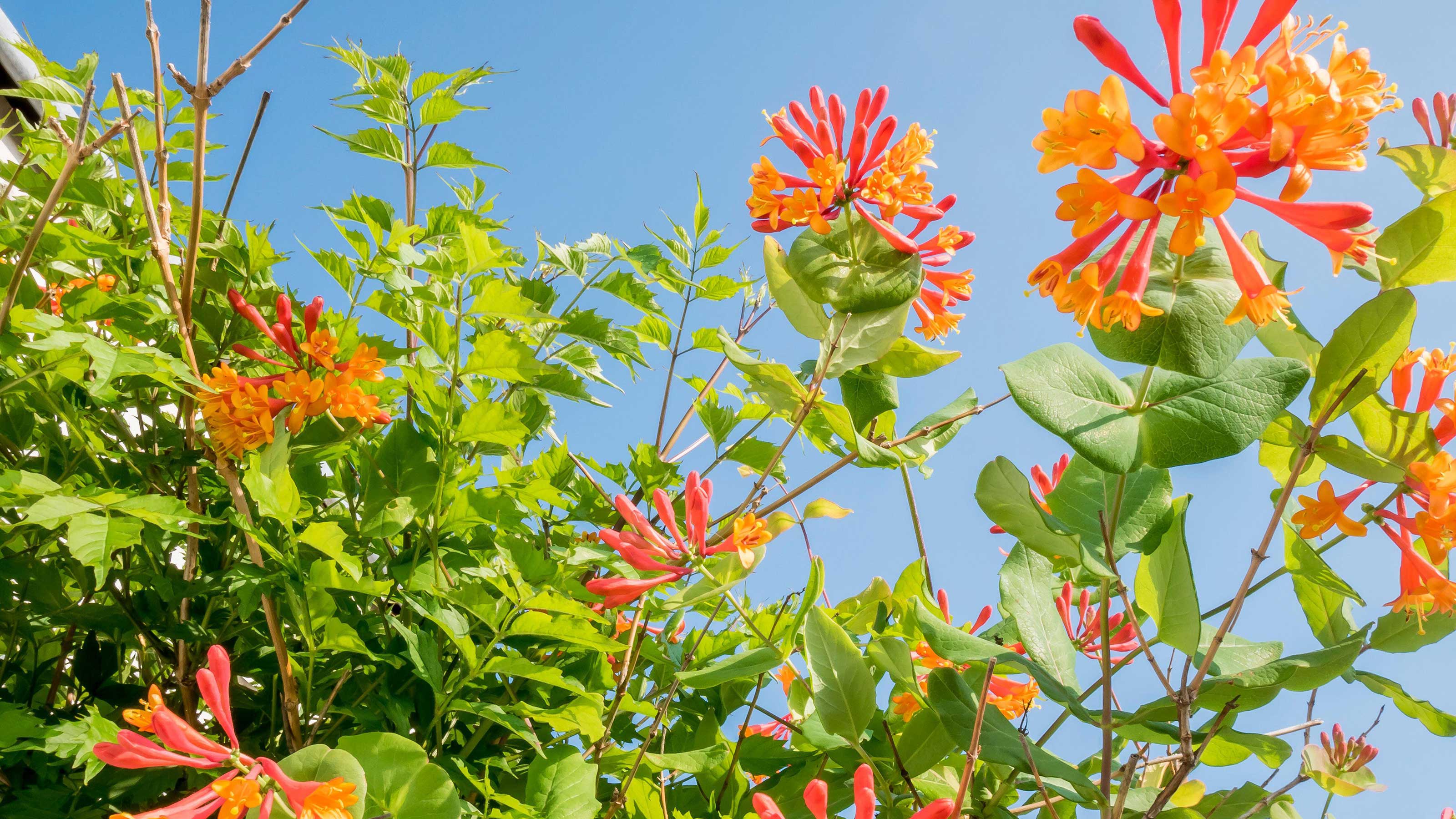

There are all types of honeysuckle to choose from, from compact to sprawling, fiery-hued to pale yellow, and climbing to shrub-like. But, if you need a hand picking the right variety for your plot, we're here to help with our round-up of favorites.
In fact, why stop at just one? 'Honeysuckles are such easy, floriferous plants that – if you've got the space – it’s well worth growing a selection,' says Hazel Silver, gardening expert of Amateur Gardening. After all, many flower at different times, and by picking the right ones you could enjoy honeysuckle blooms for many months of the year – even throughout winter.
Plus, honeysuckle care is so straightforward that they will suit novice gardeners as well as those who are more experienced but short on time. And they suit all sorts of planting schemes, too. So, whether you love a contemporary look or a billowing, cottage-garden style for your backyard, honeysuckle will make a wonderful addition.
10 types of honeysuckle to plant in your plot
With so many wonderful colors and varieties to choose from, you're spoiled for choice. Here's a round-up of some of the best types of honeysuckle.
1. Lonicera periclymenum 'Rhubarb and Custard'
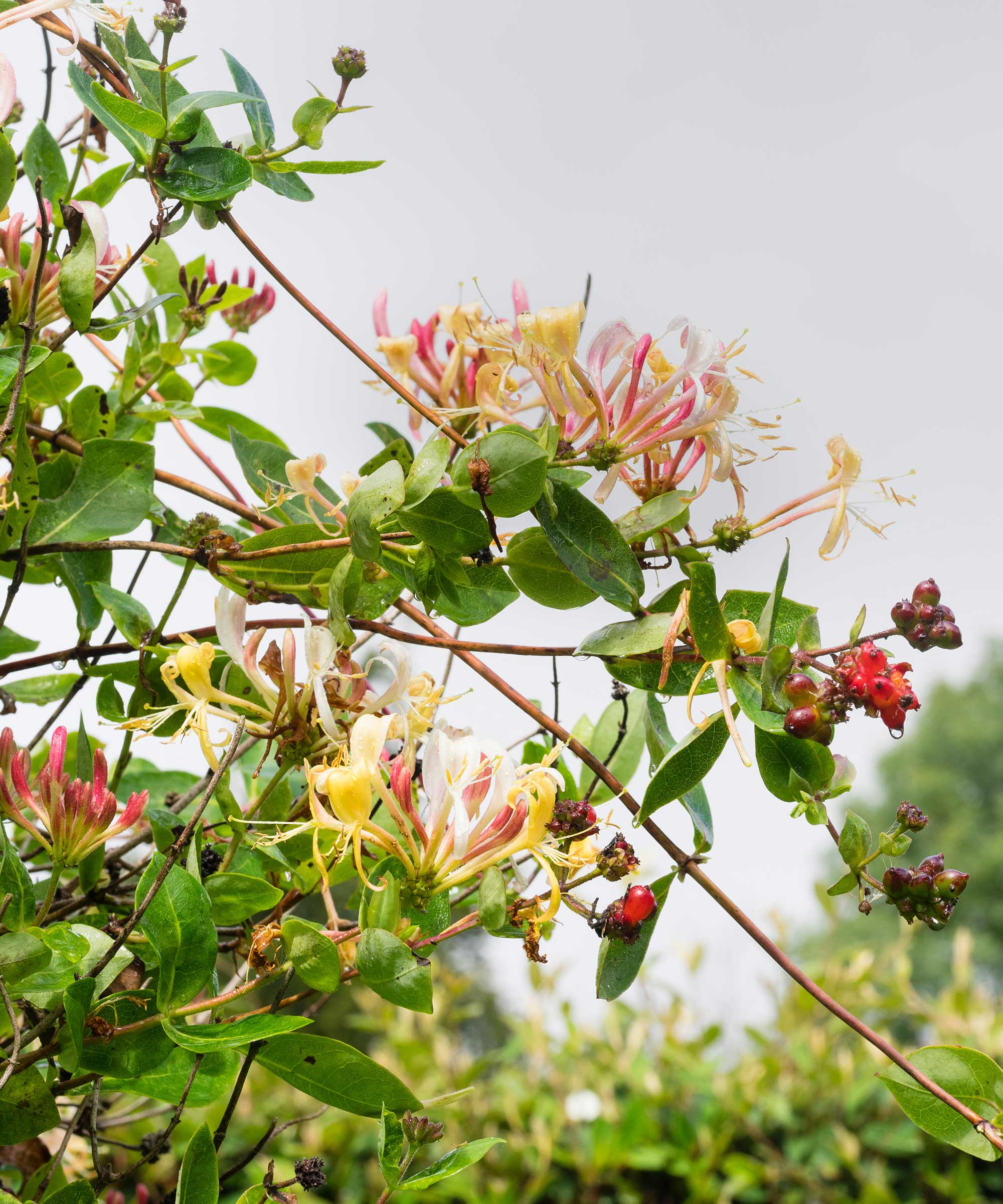
- Hardiness: USDA 5–10 (UK H6)
- Height: 6.5ft (2m)
- Spread: 5ft (1.5m)
- Best for: small gardens and containers
The deciduous, delightfully-named 'Rhubarb and Custard' produces a mass of large, powerfully-scented, ruby-red-and-yellow flowers from early summer to early fall.
This bee-friendly plant is a top performer that's also compact, so it's ideal for smaller gardens or patio pots topped with an obelisk. What's more, it's easy to grow and undemanding in terms of maintenance.
2. Lonicera x heckrottii 'American Beauty'
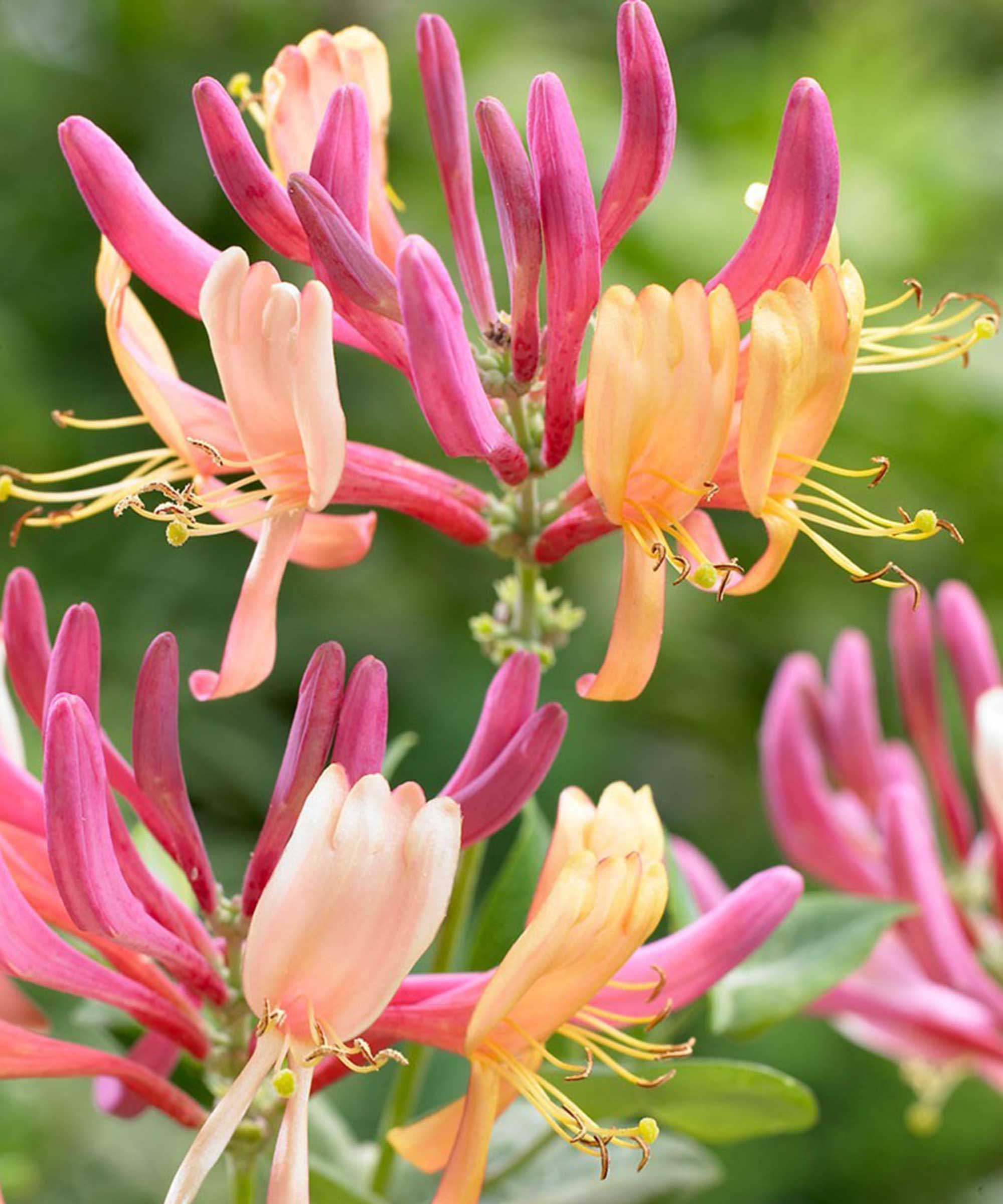
- Hardiness: USDA 5–9 (UK H4)
- Height: 16.5ft (5m)
- Spread: 16.5ft (5m)
- Best for: strong fragrance
Also known as 'Gold Flame', this semi-evergreen will grace your garden with pink and peach-colored blooms throughout summer. Red berries will appear once the flowers finish.
Strongly scented and a fast-grower, it's a wonderful plant for garden walls, or for training up a pergola, in a cottage-style garden.
3. Lonicera x brownii 'Dropmore Scarlet'
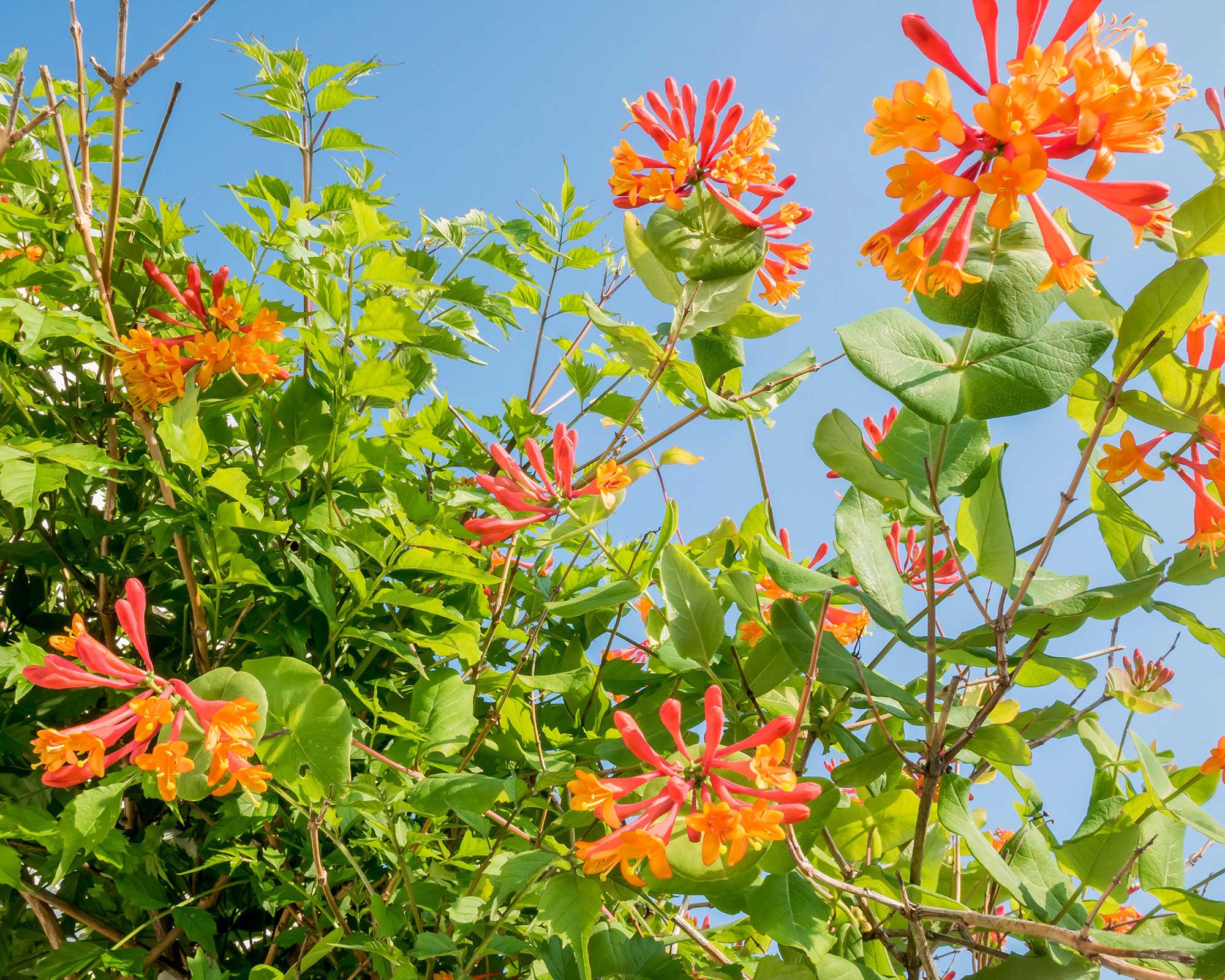
- Hardiness: USDA 4–9 (UK H4)
- Height: 13ft (4m)
- Spread: 6.5ft (2m)
- Best for: interesting blooms
It's not big on scent, says Amateur Gardening expert Hazel Sillver, 'but, the unusual Dropmore earns its place thanks to the scarlet trumpet flowers that coat this semi-evergreen honeysuckle from mid summer to early fall. The blue-green leaves are lovely, too.' It's an excellent choice for rapidly covering blank walls and garden fences.
It can, however, be susceptible to aphids, Hazel adds. But with our tips on how to get rid of aphids, they can be easily dealt with.
4. Lonicera periclymenum 'Belgica'
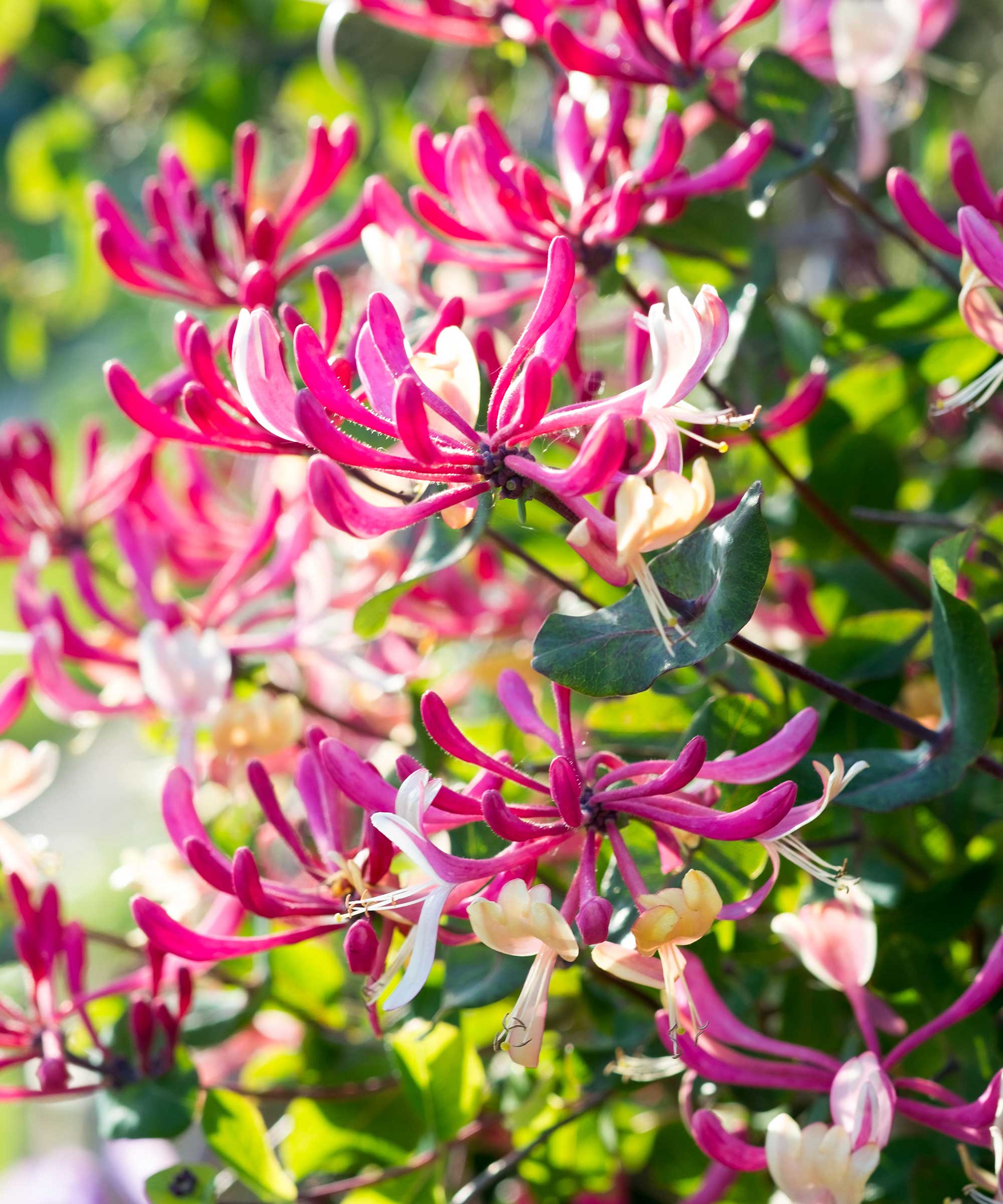
- Hardiness: USDA 7–10 (UK H4)
- Height: 23ft (7m)
- Spread: 3ft (1m)
- Best for: early blooms
The white flowers of 'Belgica' – otherwise known as the early Dutch honeysuckle – gradually turn yellow with rich red streaks, and are followed by red berries. It has a beautiful fragrance.
This vigorous climber flowers mainly from late spring to early summer, but will often produce a follow-up flush of scented blooms in early to mid fall. It grows tall and loose, so is well-suited to informal planting schemes.
5. Lonicera periclymenum 'Heaven Scent'
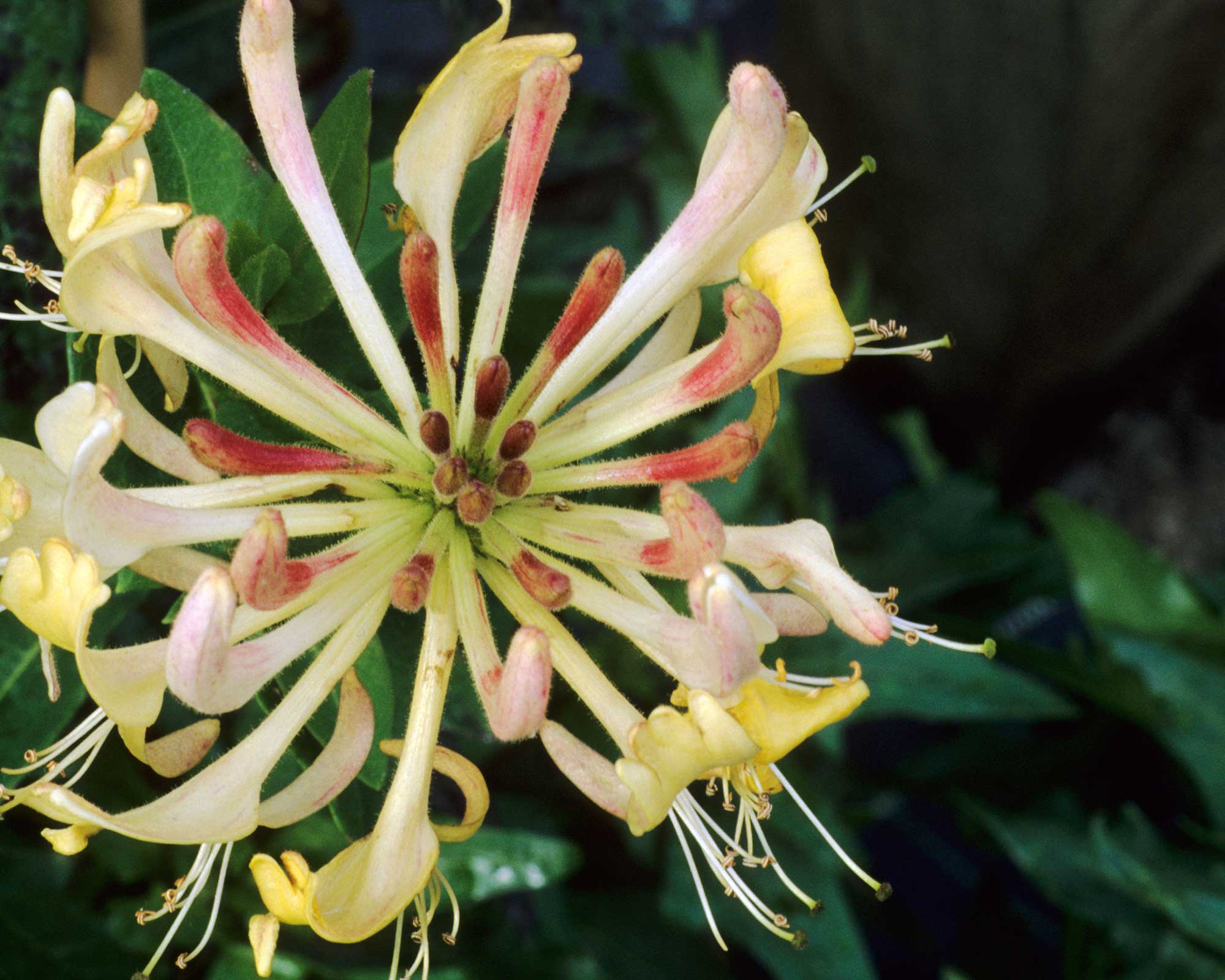
- Hardiness: USDA 5–10 (UK H4)
- Height: 23ft (7m)
- Spread: 11.5ft (3.5m)
- Best for: yellow flowers
This English wild honeysuckle is a robust, deciduous climber and a cottage garden classic.
From midsummer to early autumn, it produces very fragrant yellow flowers with tones of pinkish salmon that fade with age. They are then followed by bright, shiny red berries which wildlife will adore.
6. Lonicera periclymenum 'Graham Thomas'
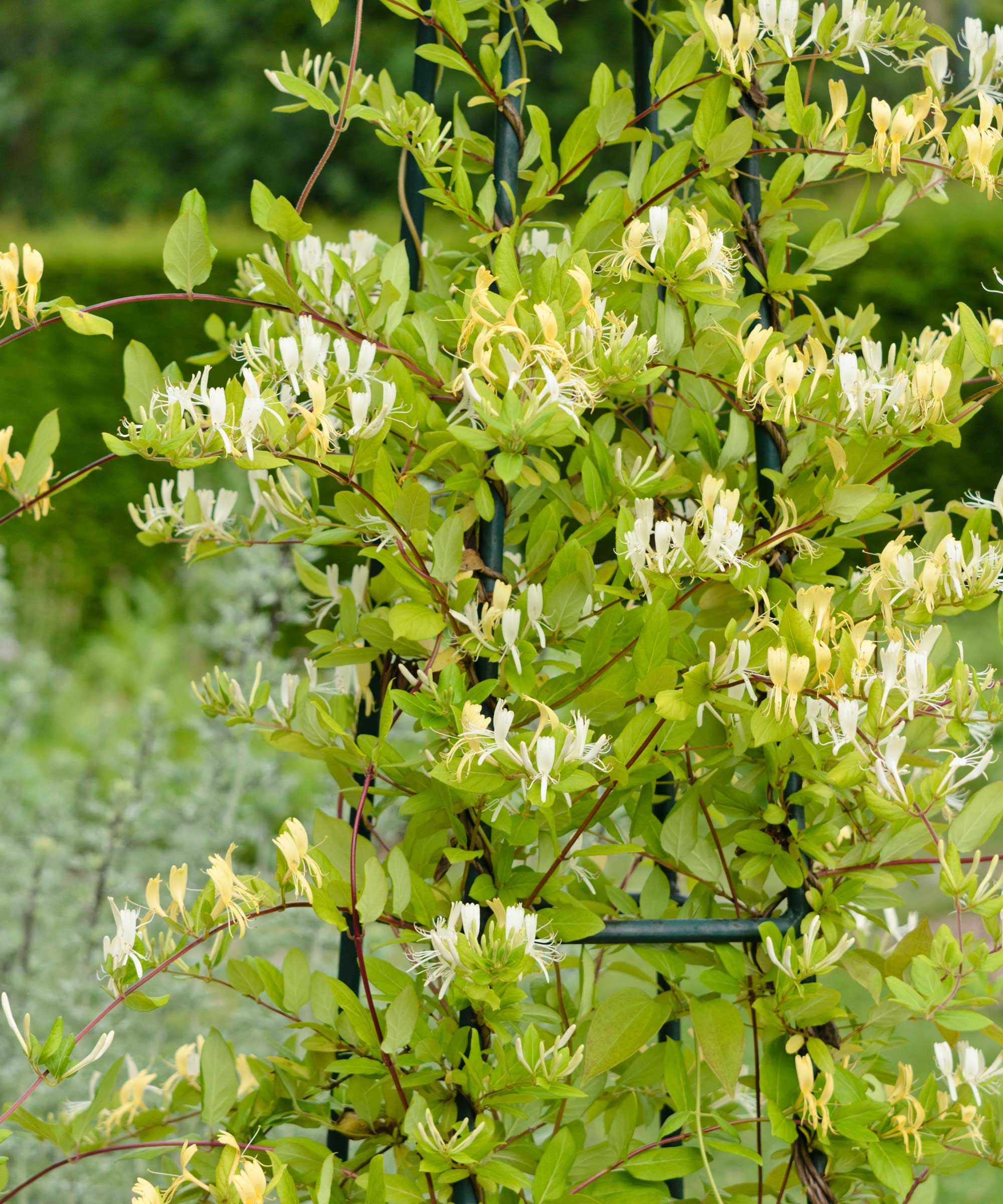
- Hardiness: USDA 7–10 (UK H4)
- Height: 23ft (7m)
- Spread: 3ft (1m)
- Best for: late summer flowers
'Graham Thomas' is an easy-to-grow and fast establishing honeysuckle that blooms from mid summer to early fall and has a fabulous evening fragrance.
'Quite possibly the best of all honeysuckle specimens, this deciduous climber has creamy-yellow flowers, whose delicious scent lingers on the air all summer,' says Hazel. 'These are followed by handsome red berries.'
7. Lonicera standishii ‘Budapest’
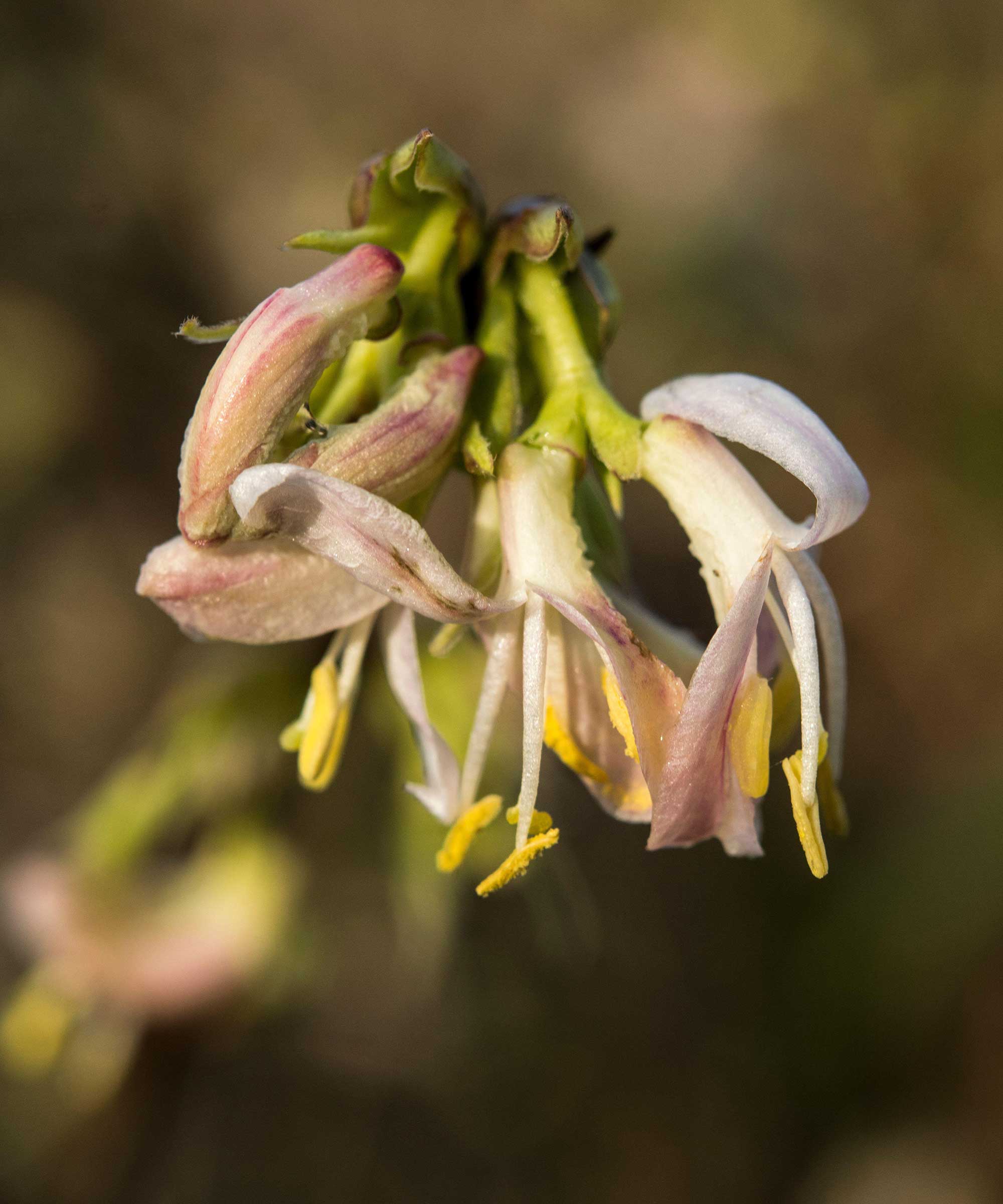
- Hardiness: USDA 5–8 (UK H4)
- Height: 6.5ft (2m)
- Spread: 5ft (1.5m)
- Best for: winter fragrance
The semi-evergreen Lonicera standishii 'Budapest' is the longest flowering of all the winter honeysuckles, spangled with pretty pink flowers that emerge as early as late fall and will continue to flourish through until early spring.
With its compact size and beautiful scent, it's one of the best winter flowering shrubs for small plots.
The team at Squire's Garden Centres advises planting cold-season honeysuckles near an entrance, pathway, or patio – that way you will be able to smell the delightful fragrance.
8. Lonicera 'Honey Baby'
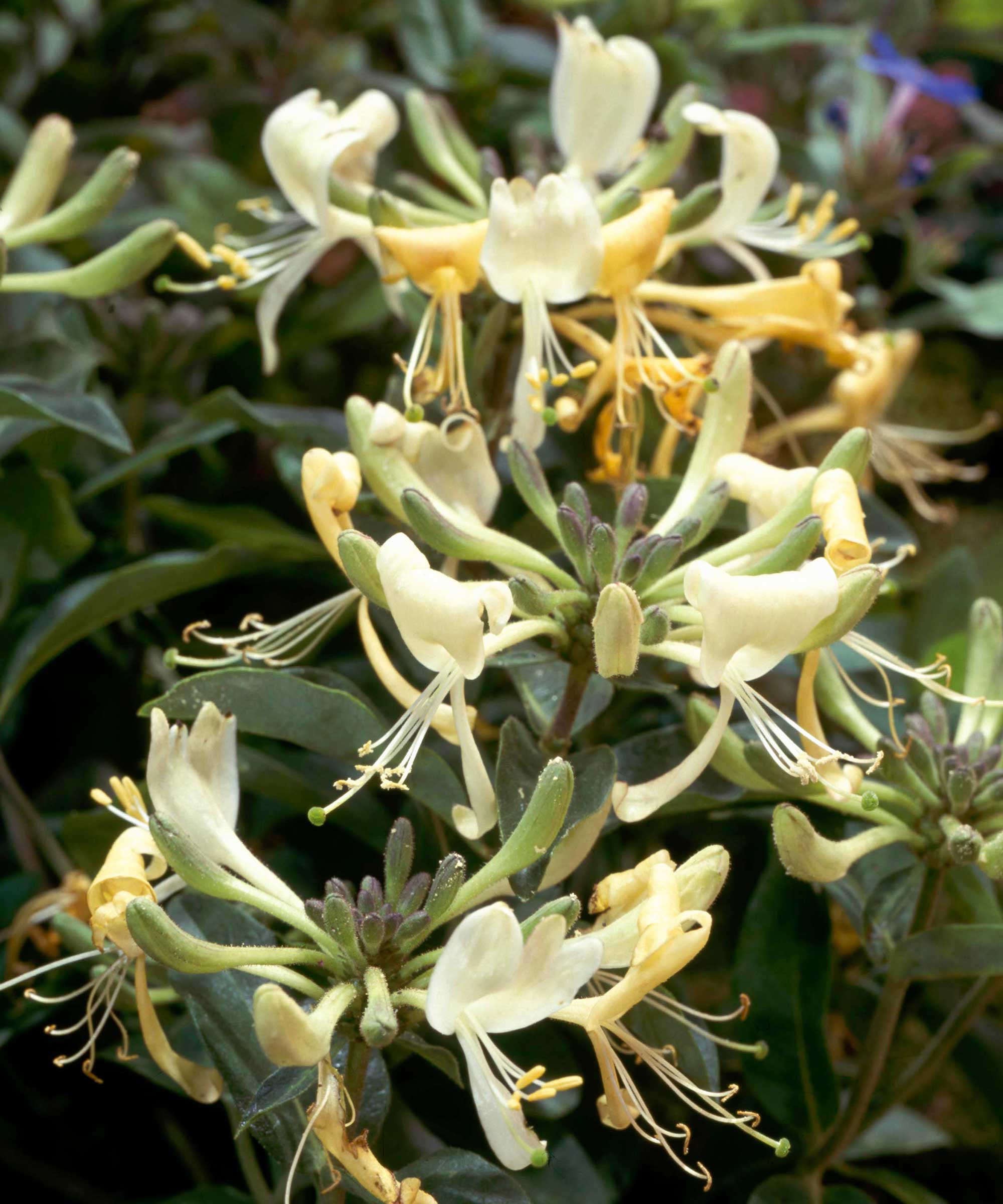
- Hardiness: USDA 4–9 (UK H4)
- Height: 1.5ft (50cm)
- Spread: 1.5ft (50cm)
- Best for: small patio pots
This plant is also known as 'Blond and Beyond'. A lovely, shrubby honeysuckle, it produces masses of cream flowers from mid-summer, says Hazel. The blooms will last until around early fall.
The experts at YouGarden add how it's 'gloriously scented', and due to its compact size, it's perfect for container gardening on patios or decks. You could also use these plants to create a low, informal hedge.
9. Lonicera sempervirens
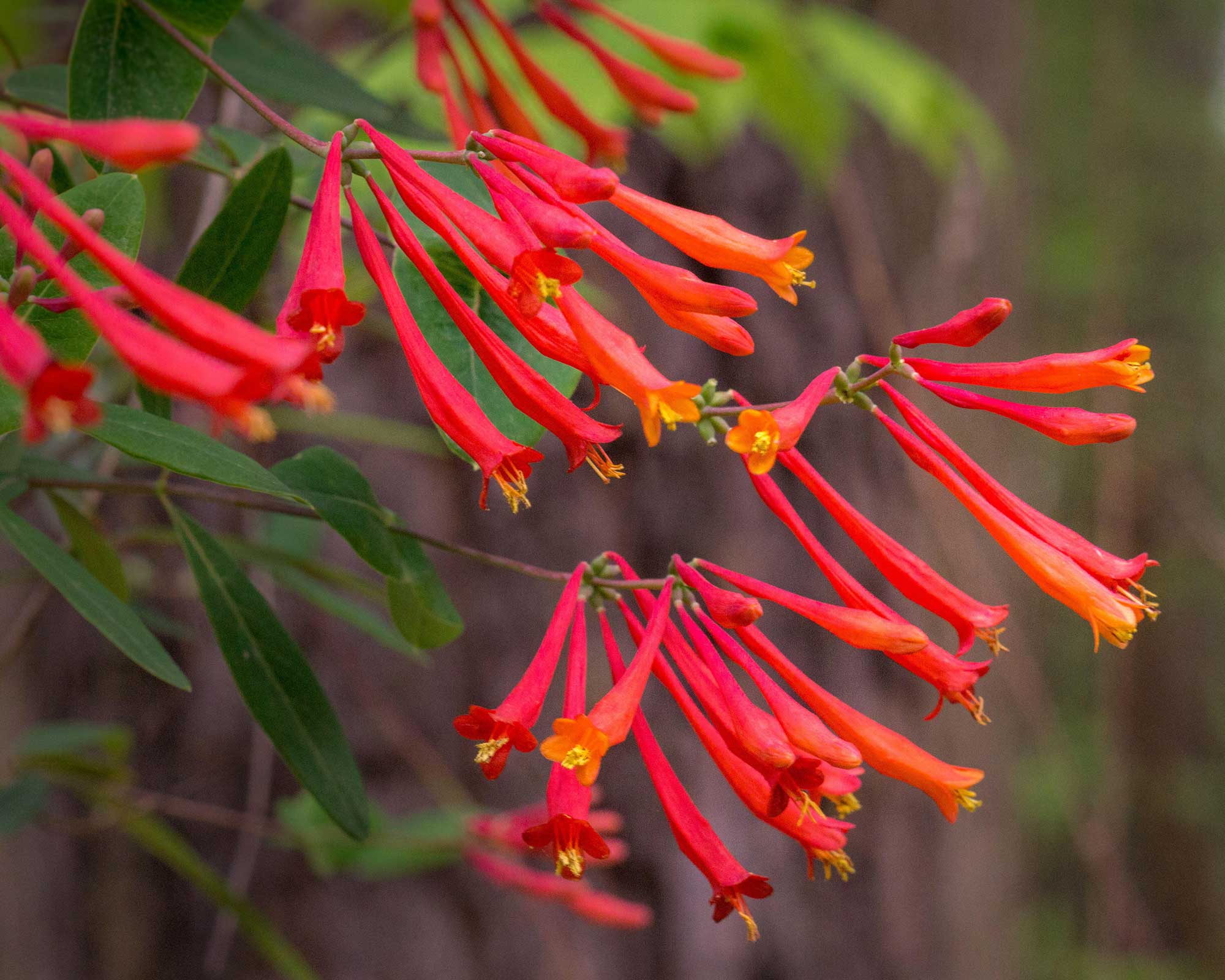
- Hardiness: USDA 7–10 (UK H4)
- Height: 13ft (4m)
- Spread: 3ft (1m)
- Best for: evergreen leaves and colorful blooms
Looking for a honeysuckle that will suit your modern garden ideas? Opt for an evergreen climbing plant like Lonicera sempervirens with its clusters of dangling, tubular, salmon-pink flowers from early summer onwards. They also happen to have a pleasantly sweet scent.
Native to eastern USA and also known as the trumpet honeysuckle, these plants have berries that follow on from the blooms, which birds will happily devour.
10. Lonicera periclymenum 'Strawberries and Cream'
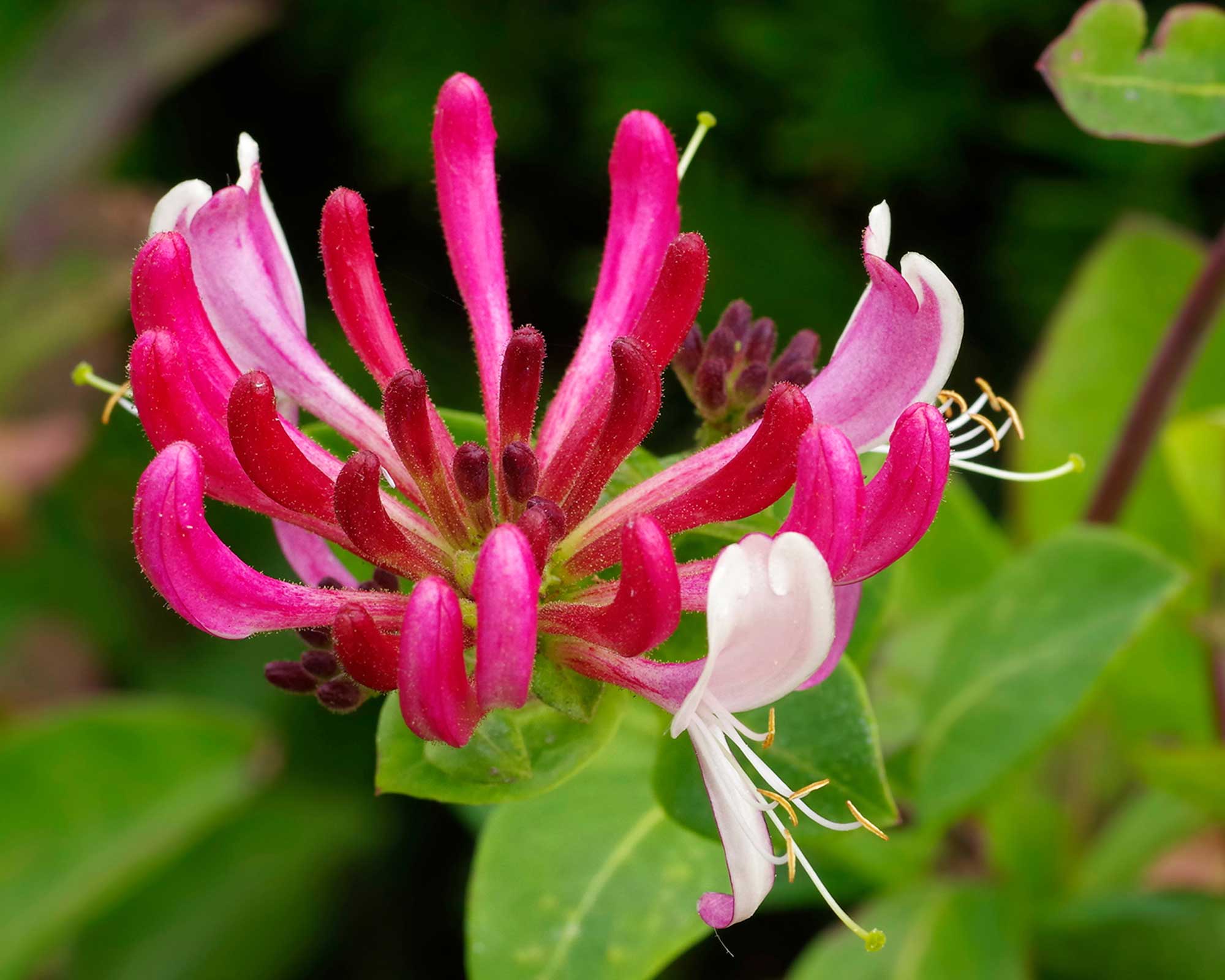
- Hardiness: USDA 5–9 (UK H4)
- Height: 3ft (1m)
- Spread: 3ft (1m)
- Best for: small-sized plants with prolific flowers
These plants produce 'long tubular flower buds in a goblet shape which are vibrantly colored with shades of dark to soft pink,' says the experts from Squire's Garden Centres. 'As the flower bud opens, a lovely shade of creamy white is seen with the tubular buds becoming trumpet-like. All of these magnificent colors blend together to resemble strawberries and cream.'
Wonderfully fragrant, it's also a great plant for pollinators and will grow to a manageable height, making it ideal for growing up garden trellises or in patio pots.
These beauties will usually bloom between mid summer to mid fall. At the end of the year the leaves drop, revealing a bare stem. This is a good time to assess any honeysuckle pruning work needed, adds the team.
Which is the best honeysuckle for your garden?
'There are evergreen and semi-evergreen species of honeysuckle, such as L. japonica and L. henryi, which provide greenery for most of the year. However, these tend to be really vigorous and are only really suitable for large gardens,' says Hazel.
'If you have a small-to-medium plot and don't want to be overwhelmed, it is best to stick to the deciduous types – those that lose their leaves over winter – such as L. periclymenum and L. x americana.'
The other thing to consider is when you want your honeysuckle to bloom. They are usually separated into early-flowering and late-flowering types, and then, of course, there are the shrubby winter bloomers too.
The early Dutch honeysuckle L. periclymenum 'Belgica', for instance, blooms from mid spring (although it often flowers again in late summer). 'Many of the L. periclymenum forms (such as the deliciously fragrant "Sweet Sue" and "Serotina"), and varieties of another European native, L. etrusca (such as "Superba" and "Donald Waterer"), get going a little later, blooming from early to mid summer and keeping up the show well into mid autumn,' explains Hazel.
Think about the soil type and other conditions of your plot too – as always, it's wise to choose a plant that suits the space you have available. For example, being Mediterranean in origin, L. etrusca will cope well with – even thrive in – hot, dry sites, while some other types of honeysuckle, such as the variety native to the UK, hate them.
And if you're pushed for space? Select one of the new compact forms, suggests Hazel, such as L. periclymenum 'Caprilia Imperial' (also known as 'Inov86'), or one of the smaller types of honeysuckle listed above.
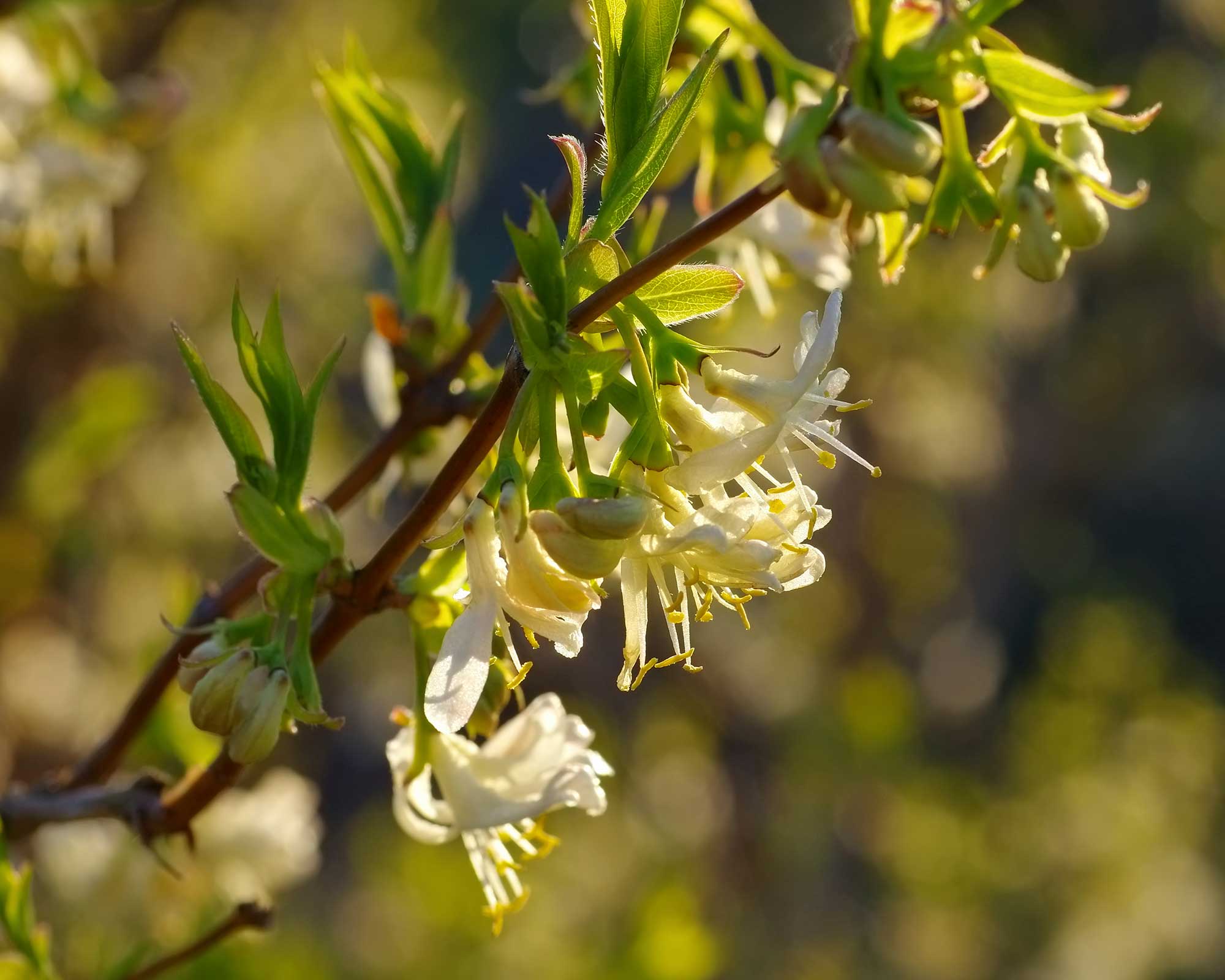
Winter-flowering honeysuckles will fill your borders with fragrance
What makes a good planting partner for honeysuckle?
With their scrambling shape and prolific, scented blooms, honeysuckles are wonderful additions to relaxed, cottage-garden schemes. So, consider surrounding them with some of the best cottage garden plants for a truly romantic setting.
However, if you're looking to combine your honeysuckle with other climbing plants, such as roses, take caution. It 'can be tricky when it comes to pruning time, so you will need to select your plant partners with care,' says Hazel.
For instance, ' L. periclymenum should be pruned back by about a third in late summer, immediately after flowering, and is thus better paired with plants that can also have a trim after flowering, such as Jasminum officinale.'

The garden was always a big part of Holly's life growing up, as was the surrounding New Forest where she lived. Her appreciation for the great outdoors has only grown since then. She's been an allotment keeper, a professional gardener, and a botanical illustrator – plants are her passion.
